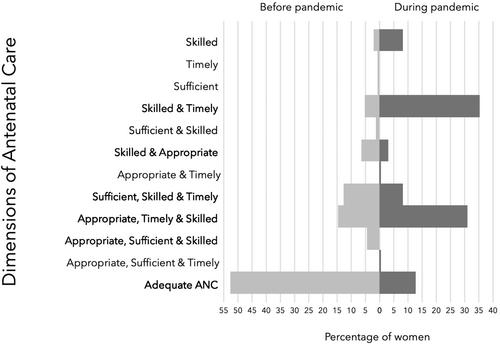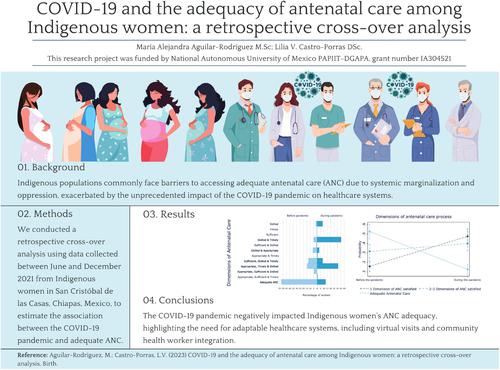COVID-19 and the adequacy of antenatal care among Indigenous women: A retrospective crossover analysis
Abstract
Background
Often marginalized and disadvantaged by systems of oppression, Indigenous populations commonly face significant barriers to accessing adequate antenatal care (ANC). The COVID-19 pandemic had an unprecedented impact on healthcare systems worldwide, including on the provision of antenatal care; this was especially so for Indigenous communities in many regions. As such, our study aimed to estimate the association between the COVID-19 pandemic and adequate ANC received by Indigenous women in Chiapas, Mexico.
Methods
We conducted a retrospective crossover analysis with data collected between June and December 2021 from Indigenous women who attended at least one ANC appointment at one of two health centers in San Cristóbal de las Casas, Chiapas. We used a multinomial logistic regression model considering the time frame (before and during the pandemic) as the primary independent variable. Adequate antenatal care comprised four dimensions: attendance by qualified personnel, timely first visit, sufficient frequency of visits, and adequacy of the content provided during the visits.
Results
During the COVID-19 pandemic, there was a significant drop in ANC adequacy, with 12.7% (95% CI: 8.3, 18.9) of Indigenous women receiving ANC, compared with the pre-pandemic rate of 52.5% (95% CI: 44.7, 60.3), among the 158 participants. The pandemic resulted in a reduction of 75.8% in the adequacy of ANC. Considering the four dimensions of adequacy, we found that having only one dimension was associated with a relative risk ratio (RRR) of 12.45 (95% CI: 6.40, 24.23), while having two or three dimensions was associated with a RRR of 5.23 (95% CI: 2.83, 9.65) when using adequate ANC as the category of reference.
Conclusions
According to our results, Indigenous women's ANC adequacy was negatively affected by the COVID-19 pandemic. In light of these findings, we emphasize the importance of developing healthcare systems that are prepared to adapt consultation schemes by implementing virtual visits and incorporating community health workers.



 求助内容:
求助内容: 应助结果提醒方式:
应助结果提醒方式:


